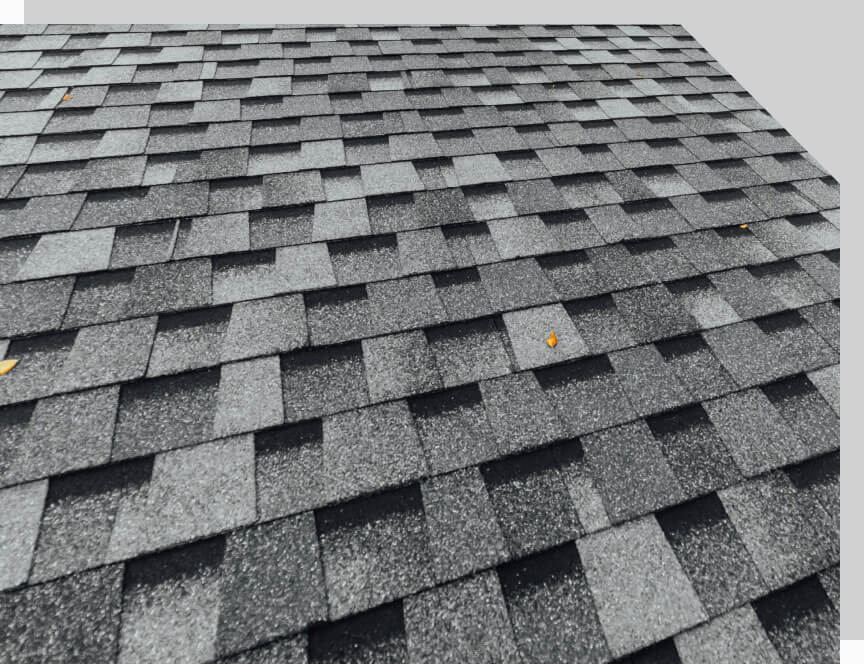Proper Asphalt Roof Repair For Lasting Protection
Asphalt roofs are a popular choice for homeowners due to their affordability and durability. However, like any roofing material, asphalt roofs can experience damage and wear over time. Let the skilled Edgewater roofing contractors of Thunder Bay Roofing explain common problems with asphalt roofs and learn how they can provide fixes that allow your roof to last.
To schedule a roof inspection, contact our roofing company today by calling 410-956-7663. Let us fix the problem before the need for a roof replacement becomes necessary.
Types of Asphalt Roofs
There are various types of asphalt shingle roofs your home or building may have, including:
- 3-Tab Shingles
- Architectural Shingles
- Luxury Asphalt Shingles
- Strip Shingles
- Tile-Strip Shingles
- Interlocking Shingles
- Hip and Ridge Shingles
- Modified Bitumen Roofing
- Built-Up Roofing
- Fiberglass Shingles
- Organic Shingles
The type of repair services needed will depend on the damage and the type of asphalt shingle roof you have. To schedule an inspection, contact our roofing company today.

Common Problems with Asphalt Roofs and How We Can Fix Them
Leaks
Leaks in asphalt roofs can arise from various sources, such as damaged or missing asphalt shingles, inadequate installation, or general wear and tear over time. These leaks can lead to water seepage, potentially causing significant damage to the underlying structure and interior of the property.
Here’s how our professional roofers will fix these issues:
- Identify the Source: To repair leaks, roofers begin by conducting a comprehensive inspection to pinpoint the exact source of the leak. They examine the affected area and assess the condition of the surrounding shingles.
- Replace Damaged Shingles: If the leak is attributed to damaged or missing asphalt shingles, the roofing professionals promptly replace the affected shingles with new ones that match the existing roof color and style.
- Sealing with Roofing Cement: To ensure a watertight seal, roofers apply roofing cement to the edges and underside of the new shingles. This sealant acts as an extra layer of protection against water infiltration.
- Address Underlying Issues: In cases where damaged shingles don’t directly cause the leak, we’ll identify and address underlying issues, such as faulty flashing or damaged underlayment, to prevent future leaks.
Cracks
Cracks may develop in roof shingles due to exposure to extreme temperatures, severe weather conditions like hailstorms, or heavy foot traffic on the roof. Cracked shingles compromise the roof’s ability to shield against water infiltration and can escalate into more extensive damage if left unattended.
Here’s how professionals fix cracks in your roofing:
- Cleaning and Preparation: Roofers thoroughly clean the cracked area, removing any debris, dirt, or loose asphalt granules. This ensures a proper surface for the repair.
- Application of Roofing Cement: Professionals carefully apply roofing cement directly to the crack, ensuring that it’s filled and sealed effectively.
- Pressing and Securing: After applying roofing cement, the roofers press down on the shingle to secure the seal and prevent any potential water penetration.
- Shingle Replacement for Larger Cracks: For more extensive cracks that can’t be effectively repaired with roofing cement, roofers may opt to use a replacement shingle for a more permanent fix.
Curling
Curling occurs when the edges of asphalt shingles start to turn upward, leaving the roof vulnerable to potential water damage. This problem often arises from aging shingles or improper installation practices. Addressing curling shingles is essential to prevent water damage and maintain the roof’s overall integrity.
Professionals approach the issue as follows:
- Repositioning and Gluing: Roofers use roofing cement to reposition the curling shingle back into place. They carefully apply the cement to the underside of the shingle and press it firmly to secure it back onto the roof.
- Replacement for Severely Damaged Shingles: If the curling is severe, resulting in shingles that are too damaged to be effectively glued back in place, professionals replace the affected shingles with new ones to ensure a seamless and secure roofing surface.
Blistering
Blistering manifests as bubbles or raised areas on the surface of asphalt shingles, caused by trapped moisture during the manufacturing process or due to inadequate ventilation. These blisters can weaken the shingles and reduce their longevity, making the roof more susceptible to further damage.
Here’s how professionals handle blistering issues:
- Cutting and Cleaning: Roofers use a utility knife to carefully cut away the blistered area, ensuring that they don’t damage surrounding asphalt shingles.
- Application of Roofing Cement: Professionals apply roofing cement to the exposed area, creating a strong and waterproof seal.
- Replacement for Extensive Blistering: In cases where blistering is widespread, roofers may opt to replace the affected shingles entirely with new ones to maintain the roof’s structural integrity.

Frequently Asked Questions
Minor repairs can be completed in a few hours, while more extensive repairs can take several days.
Asphalt roof repair requires specialized knowledge, tools, and safety equipment. It is recommended to hire a professional roofing contractor with experience in asphalt roof repair to ensure that the repairs are done correctly and safely.
It’s recommended to have your asphalt roof inspected annually by a licensed roofing contractor. Regular inspections can catch minor issues early and prevent them from escalating into major repairs.
Regular maintenance and prompt repairs are essential for preventing damage to your asphalt roof. Avoid walking on the roof, keep gutters and downspouts clean, and trim overhanging tree branches to prevent falling debris. Additionally, schedule regular inspections and address any issues promptly to prevent minor issues from escalating into major repairs.
If your asphalt roof is missing shingles, assess the extent of the damage, gather replacement materials, and carefully replace the shingles. Seal the edges with roofing adhesive and inspect the entire roof for additional damage. Consider hiring a professional if needed, and prioritize preventive measures like regular inspections to maintain the roof’s integrity.
